Ear Health: Audiometry and Otoscope Features in Clinics On Cloud
Ear health is a vital yet often overlooked aspect of overall wellness. Hearing impairments and ear disorders can significantly impact communication, education, and quality of life.
Early diagnosis and management of hearing loss, infections, and structural ear issues are essential to prevent lifelong disability. The Clinics On Cloud Health Kiosk integrates advanced ear health assessments, including audiometry and otoscope imaging, into its comprehensive screening portfolio.
This article explores the ear health tests available via the kiosk, how they work, clinical significance, and the benefits of incorporating these screenings in routine health checkups.
Importance of Ear Health Screening
Untreated hearing loss affects social interaction, cognitive development in children, and productivity in adults. Chronic ear infections may lead to complications if unchecked. Regular screening helps detect issues early, enabling timely treatment and better quality of life.
Integrating ear checks alongside other health parameters increases coverage and reduces barriers to care.
Ear Health Tests Offered by Clinics On Cloud Kiosk
1. Audiometry Testing
Audiometry measures hearing sensitivity by assessing the faintest sound an individual can detect across different frequencies (hearing thresholds). The kiosk includes a built-in audiometer with headphones delivering pure-tone signals between 125 Hz and 8 kHz.
How Audiometry Works on the Kiosk
- The user wears headphones connected to the kiosk.
- Sounds of varying frequency and intensity are played, and the user indicates when they hear the tone (usually by pressing a button).
- The kiosk software records responses across frequencies for each ear, producing an audiogram.
- Hearing loss is classified by degree (normal, mild, moderate, severe, profound) and type (conductive, sensorineural).
Audiometry helps identify hearing loss due to aging, noise exposure, infections, or congenital issues.
2. Otoscope Examination
An otoscope is a specialized camera that visually inspects the ear canal and tympanic membrane (eardrum). The Clinics On Cloud kiosk uses a digital otoscope with high-resolution imaging capabilities.
How Otoscope Imaging Works
- A trained operator or user inserts a sterile, disposable speculum attached to the otoscope into the ear canal.
- The otoscope captures images or video of the ear canal and eardrum.
- The kiosk software assists with image enhancement and storage.
- Visual examination looks for signs of infections, wax buildup, perforations, inflammation, or other abnormalities.
Digital otoscopy supports early detection of conditions requiring medical intervention, such as otitis media or tympanic membrane rupture.
Benefits of Ear Health Screening via Clinics On Cloud Kiosk
- Early Detection of Hearing Loss: Facilitates intervention to prevent progression and improve communication outcomes.
- Identification of Ear Infections: Promotes timely antibiotic or specialist treatment, avoiding chronic complications.
- Non-Invasive and Convenient: Quick, painless tests performed as part of comprehensive health checks.
- Portable and Digital: Enables screening in diverse settings including schools, workplaces, rural clinics, and camps.
- Data Integration: Results are securely stored and available for telemedicine consultations or referrals.
Use Cases
- School hearing screening to detect impairments affecting learning.
- Occupational health for noise-exposed workers.
- Community health camps enhancing ear and hearing screening coverage.
- Primary care clinics providing baseline ear health evaluation.
Conclusion
Including audiometry and otoscope features in the Clinics On Cloud Health Kiosk significantly enhances preventive healthcare by addressing ear health alongside other vital parameters. These tests offer comprehensive, quick, and accurate ear assessments, enabling early diagnosis and management of hearing and ear-related disorders. Through integrated digital technology and telemedicine support, Clinics On Cloud empowers individuals and healthcare providers to improve auditory health outcomes across populations.

